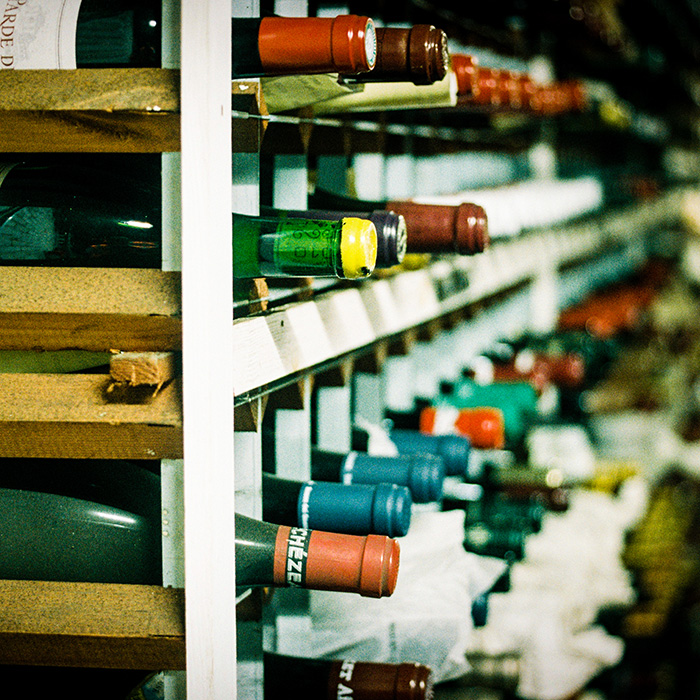How to store wine at home
Author: Berry Bros. & Rudd

Photograph: Simon Peel
Few homes boast the ideal wine-storage conditions offered by a deep underground cellar. Such a gem will have equable temperature, moderate humidity and freedom from vibration. Wines “laid down” here (as the traditional term has it) will mature slowly to the best attainable peak.
Lacking such a cellar, some wine-lovers use commercial storage facilities, calling in wine when they need it. Others invest in sophisticated home “wine rooms” or storage cabinets.
What does wine need? The basics are:
- Keep it dark
- Keep the bottles lying down
- Keep it still
- Keep it at a cool, even temperature (and if possible, slightly humid)
Any wine will benefit from these conditions; fragile old wines really need them. Much can be done with negatives: don’t –
- Store bottles upright: the corks will dry out and the wine will spoil
- Store wine in the kitchen, where it will get too warm
- Store wine in any space, be it cellar or no, that has hot pipes
- Subject wine to vibration, for instance, beside a busy staircase
- Store wine somewhere too humid or damp with no ventilation
Once you have avoided the “don’ts”, it is possible in most homes to achieve the basic needs. A dark cupboard can be insulated to keep it cool, as can an out-building, to stop it getting too hot or too cold.
TEMPERATURE
Wine is tolerant of most things – except sudden change. Ideally, the temperature should stay even over the year at around 10 to 12˚C (50 to 54˚F). In practice, nearly every cellar will be a little warmer in summer and cooler in winter. This seasonal change is fine: what wine hates is sudden swings.
BINS, BOXES AND RACKS
Most cellars today have single-bottle storage spaces – at their simplest, holes in a rack. It can be useful to have spaces that will store six or 12 bottles of the same wine together. The traditional cellar’s brick “bins” were designed for the bottles from a whole cask – a less common purchase today…
Wine that you buy in wooden cases can be stored in them until ready. Keep them off the floor with a wooden batten or two to allow air to circulate. This avoids rot or mould.
WHICH WINE IS WHERE?
The organised wine-lover will combine his or her cellar book with a record of which bottles are where. The less efficient will revel in the serendipitous discoveries a cluttered cellar provides – but will regret those overlooked wines that go past their peak, unopened and unloved.
Top tip: Damp or humid cellars can cause labels to peel off: elastic bands (or cling film) can help with this.
Find out more about Berry Bros. & Rudd’s wine storage facilities here.


